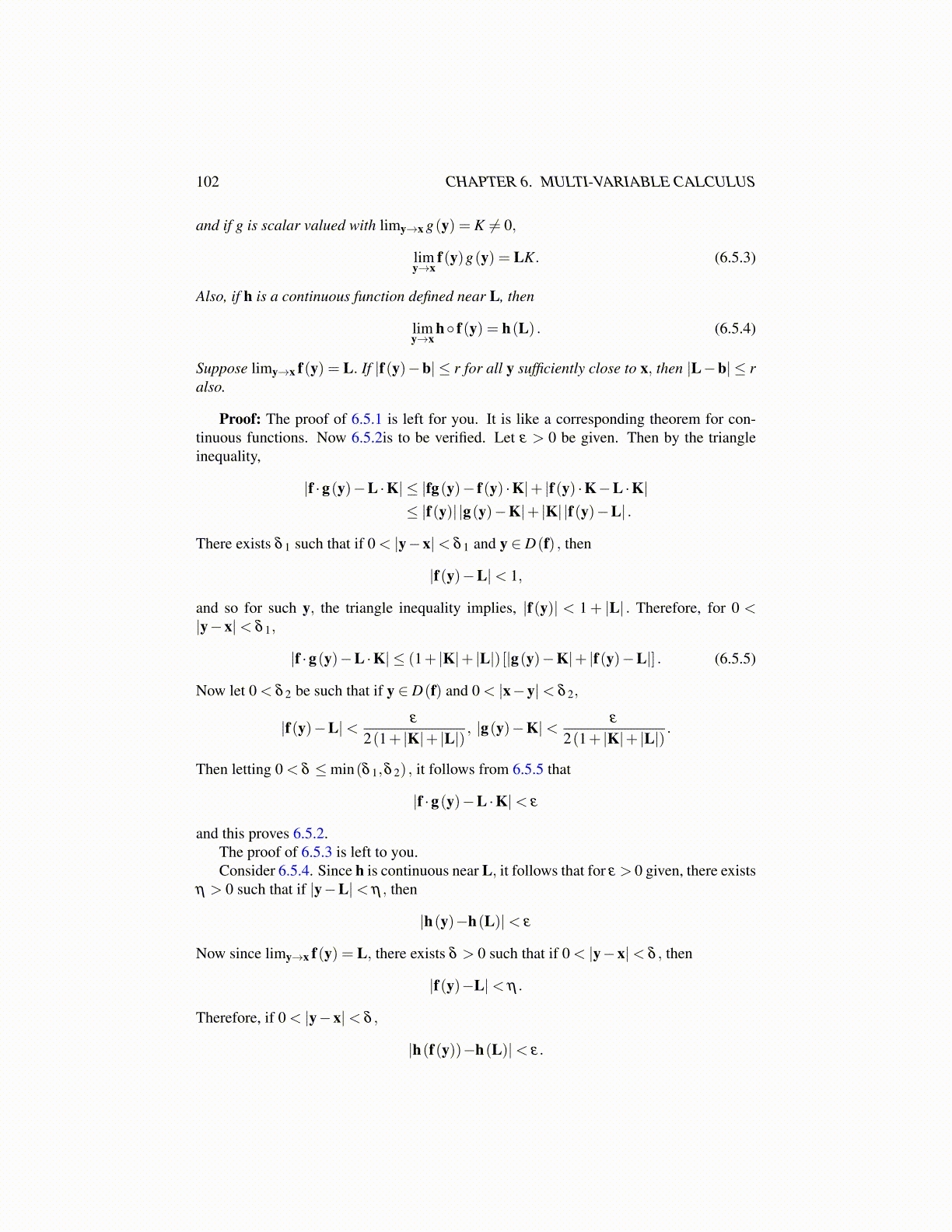
102 CHAPTER 6. MULTI-VARIABLE CALCULUS
and if g is scalar valued with limy→x g(y) = K ̸= 0,
limy→x
f(y)g(y) = LK. (6.5.3)
Also, if h is a continuous function defined near L, then
limy→x
h◦ f(y) = h(L) . (6.5.4)
Suppose limy→x f(y) = L. If |f(y)−b| ≤ r for all y sufficiently close to x, then |L−b| ≤ ralso.
Proof: The proof of 6.5.1 is left for you. It is like a corresponding theorem for con-tinuous functions. Now 6.5.2is to be verified. Let ε > 0 be given. Then by the triangleinequality,
|f ·g(y)−L ·K| ≤ |fg(y)− f(y) ·K|+ |f(y) ·K−L ·K|≤ |f(y)| |g(y)−K|+ |K| |f(y)−L| .
There exists δ 1 such that if 0 < |y−x|< δ 1 and y ∈ D(f) , then
|f(y)−L|< 1,
and so for such y, the triangle inequality implies, |f(y)| < 1 + |L| . Therefore, for 0 <|y−x|< δ 1,
|f ·g(y)−L ·K| ≤ (1+ |K|+ |L|) [|g(y)−K|+ |f(y)−L|] . (6.5.5)
Now let 0 < δ 2 be such that if y ∈ D(f) and 0 < |x−y|< δ 2,
|f(y)−L|< ε
2(1+ |K|+ |L|), |g(y)−K|< ε
2(1+ |K|+ |L|).
Then letting 0 < δ ≤min(δ 1,δ 2) , it follows from 6.5.5 that
|f ·g(y)−L ·K|< ε
and this proves 6.5.2.The proof of 6.5.3 is left to you.Consider 6.5.4. Since h is continuous near L, it follows that for ε > 0 given, there exists
η > 0 such that if |y−L|< η , then
|h(y)−h(L)|< ε
Now since limy→x f(y) = L, there exists δ > 0 such that if 0 < |y−x|< δ , then
|f(y)−L|< η .
Therefore, if 0 < |y−x|< δ ,
|h(f(y))−h(L)|< ε.